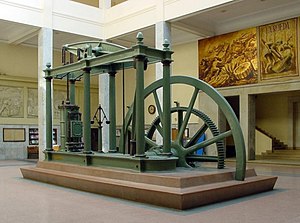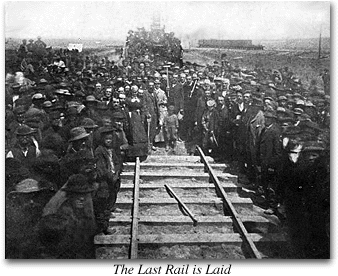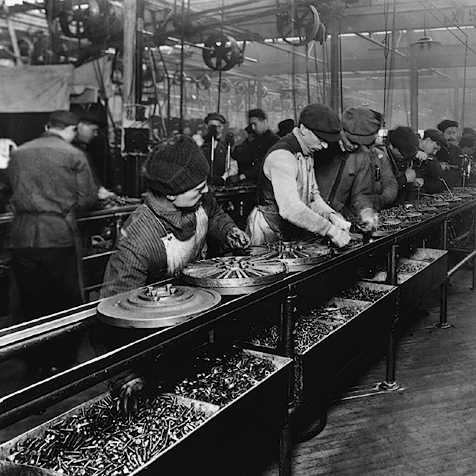|
1733 - Flying Shuttle - Weaving speeds up 
1764 - Spinning Jenny (J. Hargeaves) - spinners catch up with weavers 
1769 - Water Frame (R. Arkwright) - uses water to power spinning wheels 
1779 - Spinning Mule (S. Crompton) - made better thread than Jenny and Frame 
1781 - Watt Steam Engine (J. Watt) - finally made steam power safe for use in machines 
1785 - Power Loom (E. Cartwright) - adds steam power to weaving 
1793 - Cotton Gin (E. Whitney) - cotton picked faster 
1800 - First Battery (A. Volta) 
1803 - Interchangeable Parts (E. Whitney) - beginnings of mass production 
1804 - Steamship (R. Fulton) - steam engine added to ship 
1829 - Locomotive (G. Stephenson) - steam engine that ran on iron rails 
1831 - First Electric Generator (M. Faraday) 
1839 - First Photograph (L. Dauguerre) 
1865 - Steel (H. Bessmer) - produce strong steel for many uses 
1869 - Transcontinental Railway completed in USA 
1876 - Telephone (A.G. Bell) 
1886 - Automobile (G. Daimler) - invents gas-powered engine, which is put into cars 
1886 - Lightbulb Patented (T. Edison) 
1880s - Alternating Current (N. Tesla) - electricity moves into homes 
1904 - Airplane (Wright Bros.) 
1913 - Assembly Line (H. Ford) 
|

